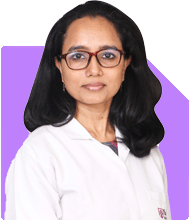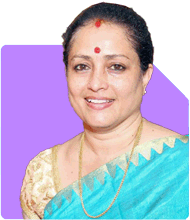Sudden Black Smoke Obstruction in Left Eye - Seeking Help
Dr Hemalata Arora | Answer |Ask -Follow
General Physician - Answered on Jun 21, 2024
In a career spanning over 24 years, she has focused on managing infectious diseases, critical illnesses and lifestyle disorders.
Dr Arora completed her MBBS and MD from the King Edward Memorial Hospital and Seth Gordhandas Sunderdas Medical College in Mumbai.
She is ECFMG certified, accredited by the American Board of Internal Medicine, Diplomate of the National Board and a DNB faculty.
She was honoured with the Paul Bunn award for her promising performance in the field of infectious diseases at SUNY Upstate Medical University, New York.... more

Hello Doctor, few months back, all of a sudden I started viewing black smoke like object from my left eye which is also obstructing my view and things are not readable from left eye.What is the reason and what would be the treatment cann you please suggest.
You may like to see similar questions and answers below
Dr Karthiyayini Mahadevan | Answer |Ask -Follow
General Physician - Answered on Mar 03, 2023
Dr Karthiyayini Mahadevan | Answer |Ask -Follow
General Physician - Answered on Jun 26, 2024
Dr Shyam Jamalabad |106 Answers |Ask -Follow
Dentist - Answered on Dec 05, 2025
Dr Dipankar Dutta |1836 Answers |Ask -Follow
Tech Careers and Skill Development Expert - Answered on Dec 05, 2025
Ulhas Joshi |280 Answers |Ask -Follow
Mutual Fund Expert - Answered on Dec 05, 2025
Dr Dipankar Dutta |1836 Answers |Ask -Follow
Tech Careers and Skill Development Expert - Answered on Dec 04, 2025
Ravi Mittal |676 Answers |Ask -Follow
Dating, Relationships Expert - Answered on Dec 04, 2025
Anu Krishna |1745 Answers |Ask -Follow
Relationships Expert, Mind Coach - Answered on Dec 04, 2025
Anu Krishna |1745 Answers |Ask -Follow
Relationships Expert, Mind Coach - Answered on Dec 04, 2025
Mayank Chandel |2562 Answers |Ask -Follow
IIT-JEE, NEET-UG, SAT, CLAT, CA, CS Exam Expert - Answered on Dec 04, 2025
Mayank Chandel |2562 Answers |Ask -Follow
IIT-JEE, NEET-UG, SAT, CLAT, CA, CS Exam Expert - Answered on Dec 04, 2025
Mayank Chandel |2562 Answers |Ask -Follow
IIT-JEE, NEET-UG, SAT, CLAT, CA, CS Exam Expert - Answered on Dec 04, 2025

























